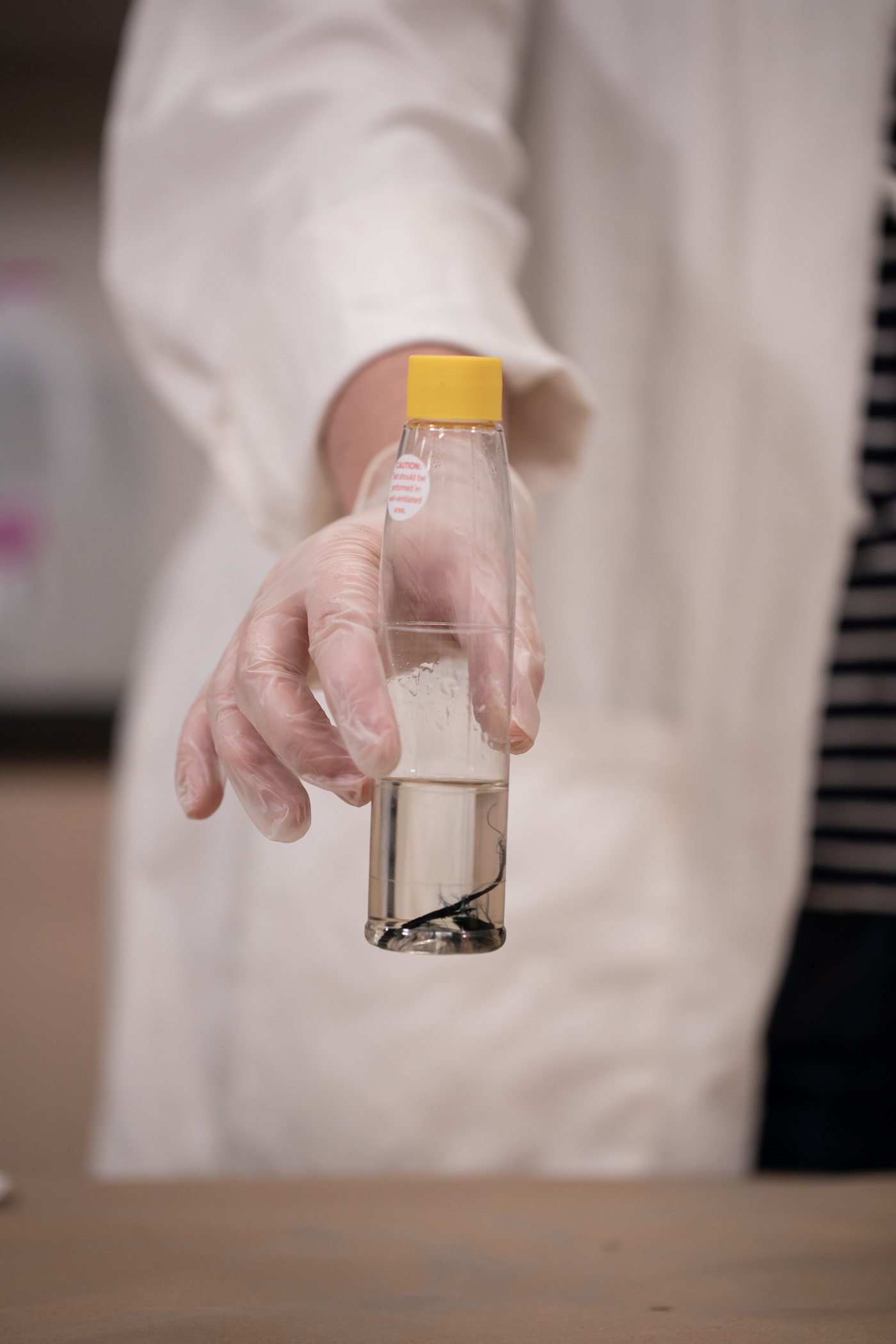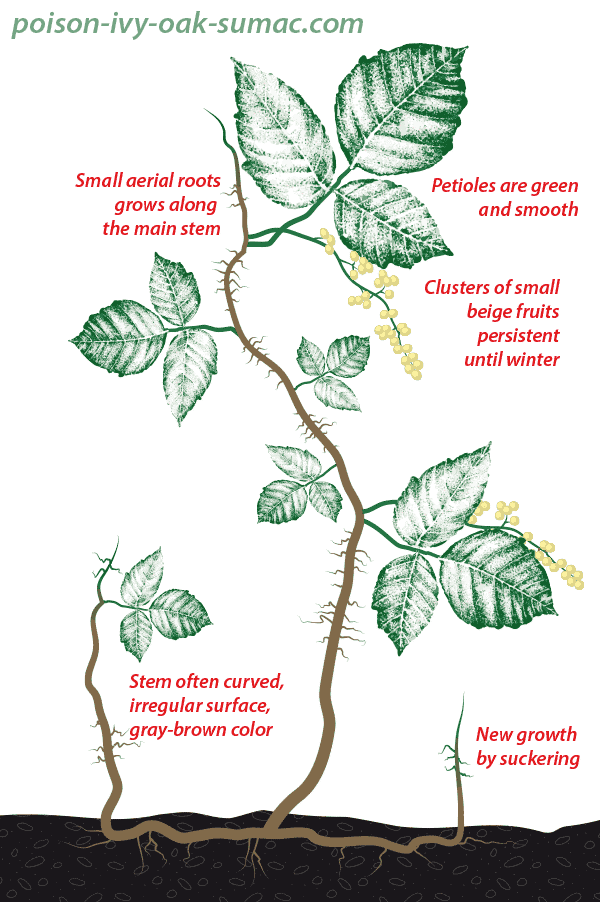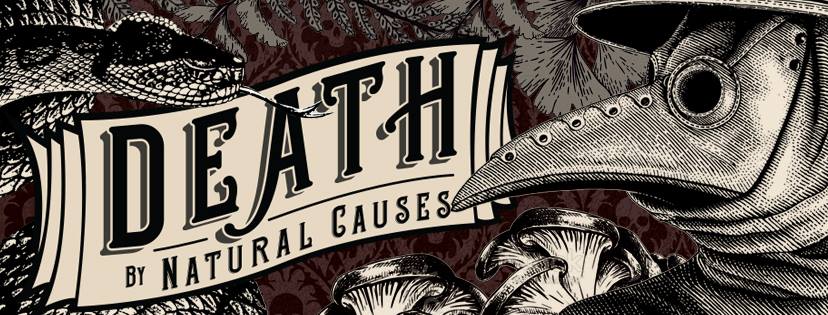Today on Beyond Bones we’re sharing the results of a rather unusual test that was recently performed by the curators of our blockbuster special exhibition Death by Natural Causes.

The test in question involved a Victorian-era dress, a book printed during the early 20th century and a can of insecticide. According to our research, all of these items may or may not contain dangerous amounts of arsenic.
Generally when people test their clothing and other personal items for traces of deadly elements, they hope for a negative result. Not us. All of the items we tested were destined to be displayed in our exhibit and we were actually hoping that they would turn out to be deadly.
To add some perspective, Death by Natural Causes isn’t an exhibit about heart attacks and strokes, it’s an exhibition dedicated to bizarre and unexpected ways that the world around us can kill us; everything from bear attack to tripping over furniture is covered. Also, certain historical dangers like the clothing that was died with Paris Green during the 19th century to achieve a vibrant green coloration. It was a surprisingly common thing. Not only were clothes dyed with Paris green, but wallpaper, printed materials and even candy were colored with the deadly dye. After the substance’s harmful effects were discovered, the Paris Green was relegated to being primarily used as rat poison or insecticide. So instead of wearing it, people just dusted it around their house and yard. Much better!
So, let’s get to the test.
The dress has been tentatively dated to the 1870’s, which was the era when the use of Paris Green-based dyes was declining. So going into the test, we really weren’t sure what we would find.

The test we used is actually designed to detect arsenic in soil samples. It involves dropping a series of reagents into a bottle containing the sample soaked in water to see what kind of reaction occurs.
The dress test turned out negative, but our Curators, David and Nicole, say that it’s possible that the sample from the dress (taken from the inside of one of the seams, was not soaked long enough to allow the material to be completely permeated with water. We only soaked it for a few minutes. Later on they plan to do the test again with a 24 hour soak, but for now we can’t say for sure whether the dress actually has arsenic in it.
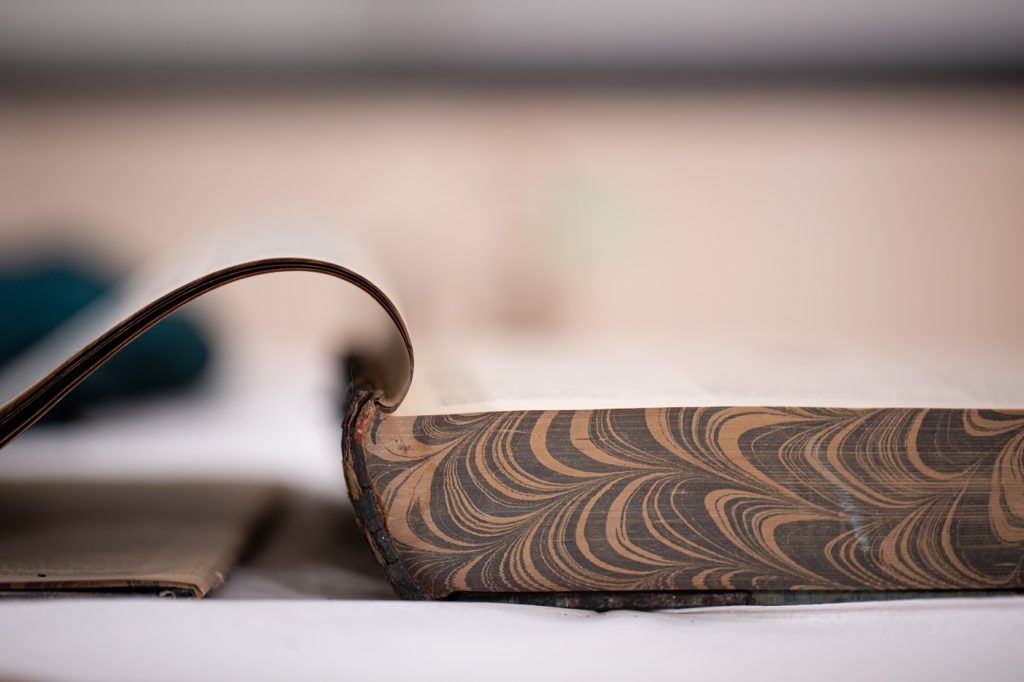
Next up was an old encyclopedia that David picked up at an flea market a while back. He believed that the elaborate, greenish pattern printed on the footplate of the volume (pictured below) may have been printed with arsenic-based ink.
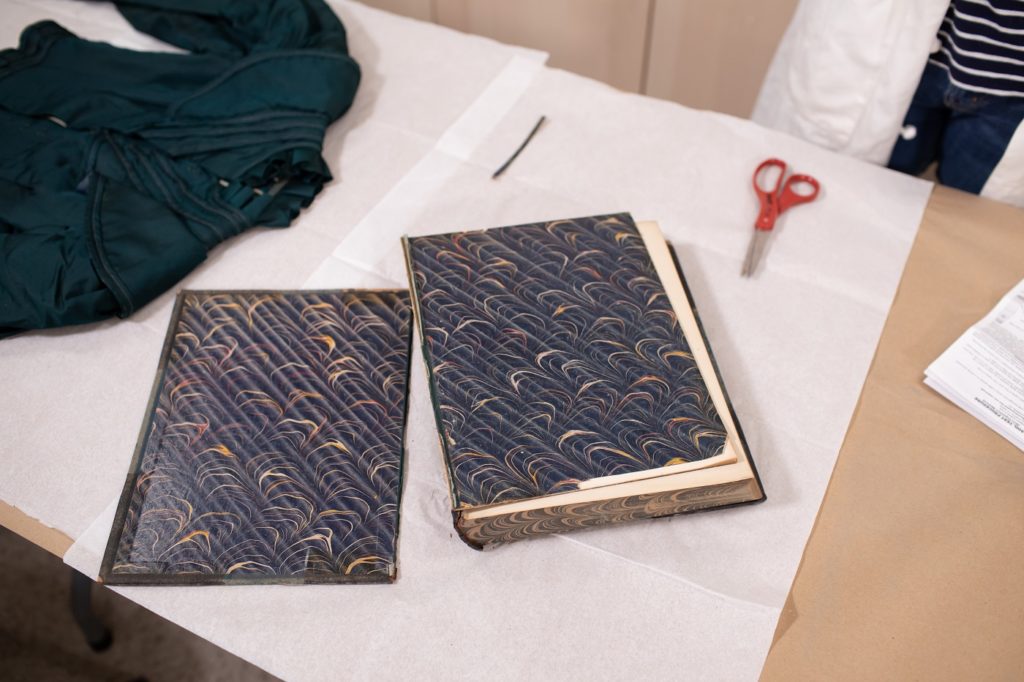
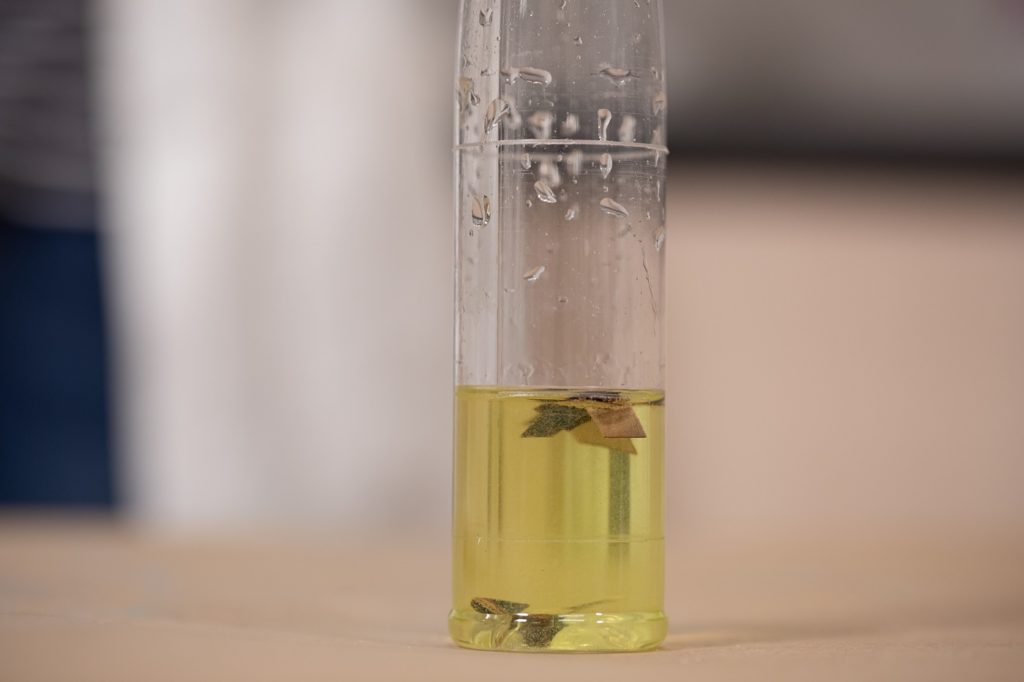
The ancient paper dissolved pretty well in our testing solution, so we hoped that would mean more accurate results.
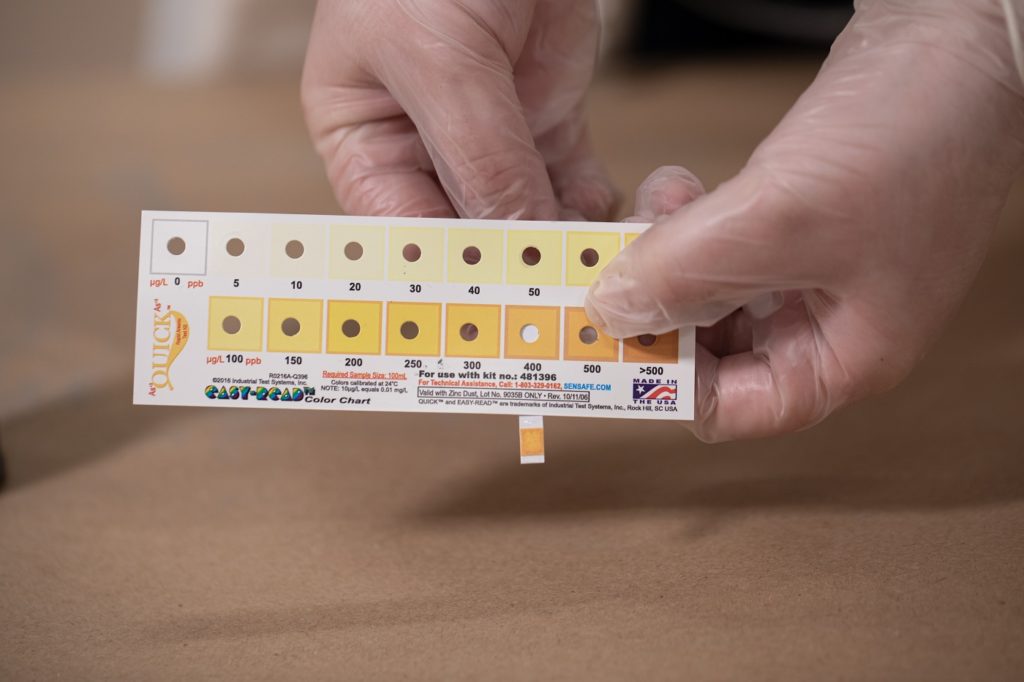
And tada! The sample tested positive for arsenic. Seeing that it wasn’t exactly chart-topping result, I asked David and Nicole how much arsenic need to be present in order for a substance to be dangerous. They both quickly responded that pretty much any arsenic is bad.
So there you go! We have a verified deadly book going on display in our Death by Natural Causes exhibit.
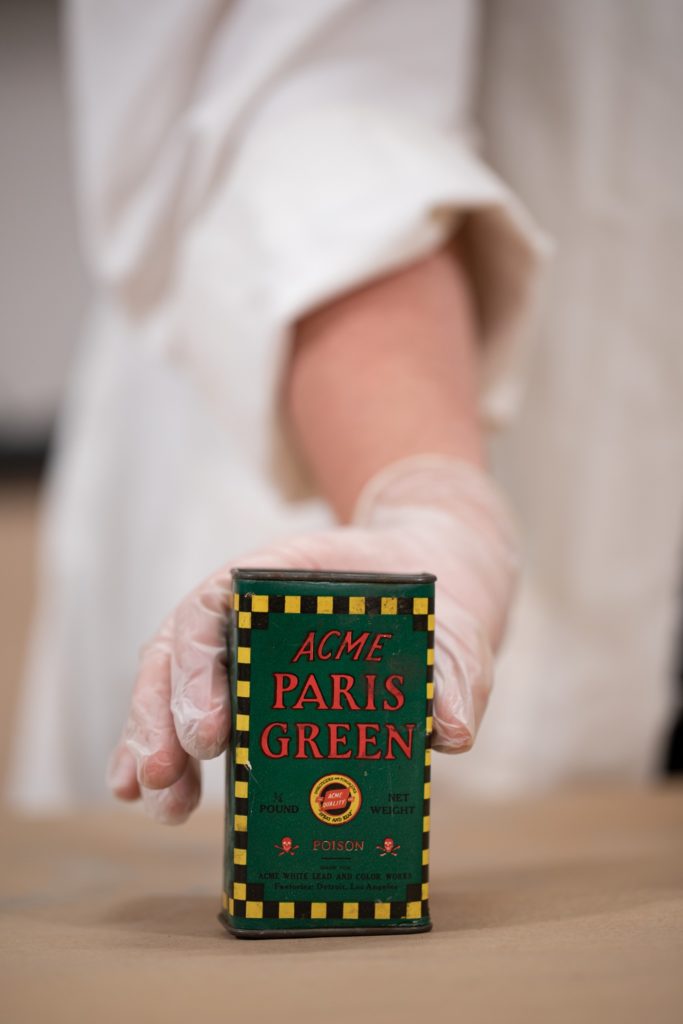
Finally we tested a sample of actual Paris Green Insecticide powder from the early 20th century. David’s intern, Amelia, who actually acquired all of these items and also conducted the arsenic tests, found it online. It’s actually surprisingly easy to acquire this stuff.
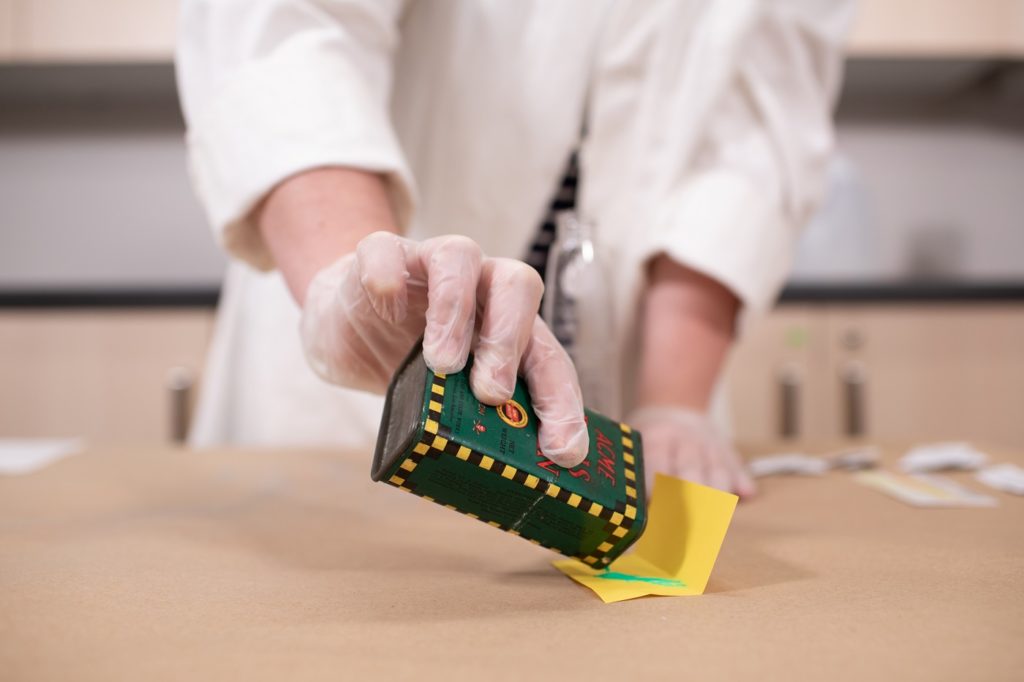
Notice the super-bright green color that made the substance so alluring to printers, textile manufacturers and even confectioners.
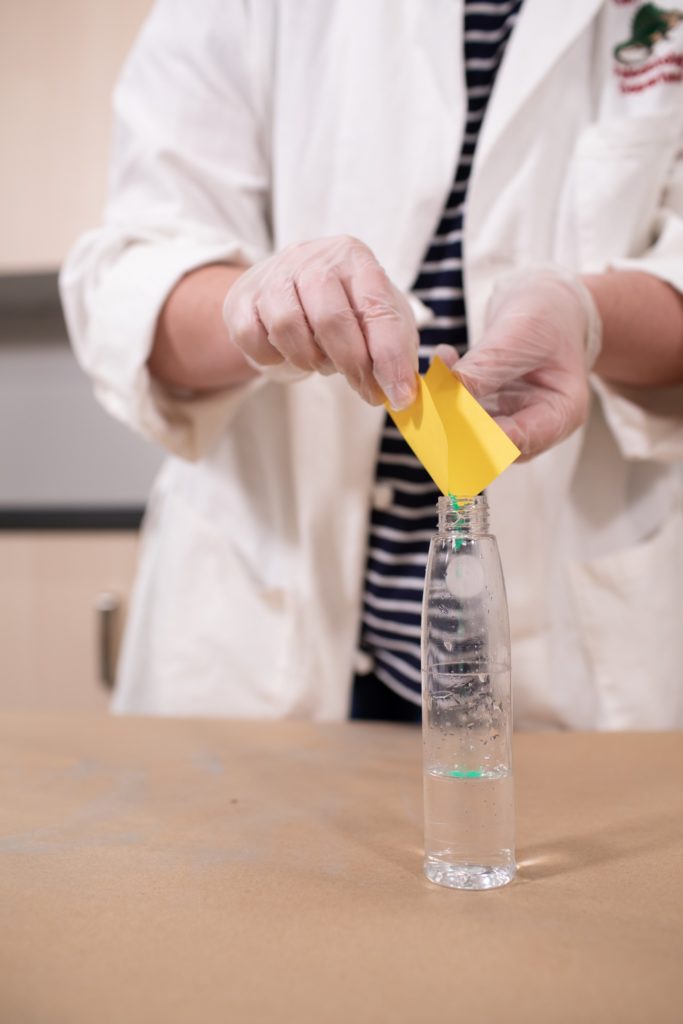
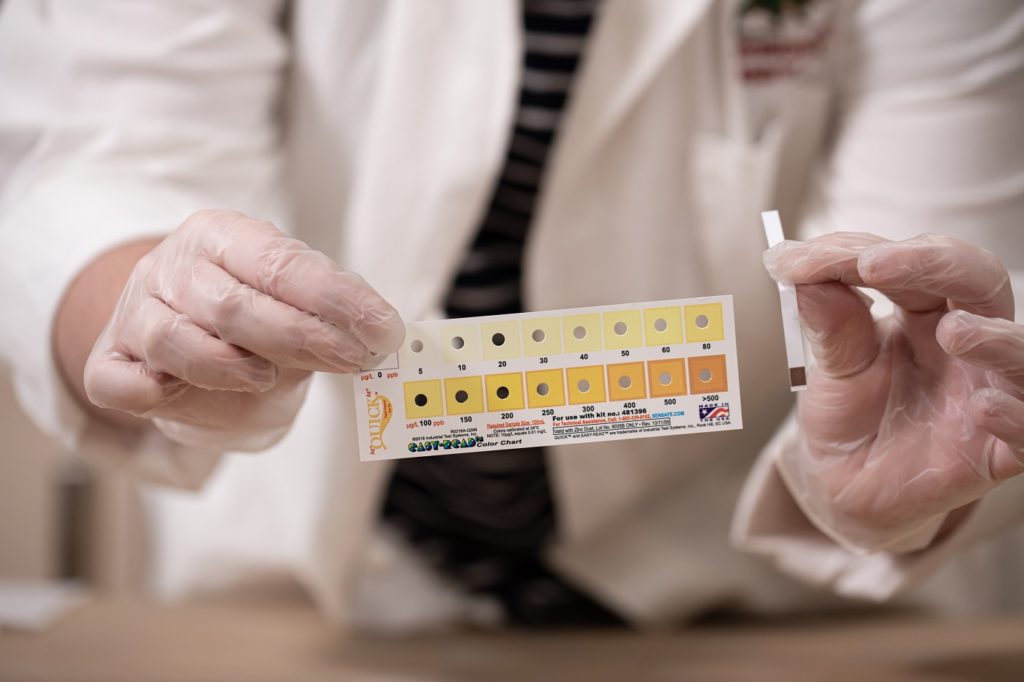
As you can see, the Paris Green was literally off the chart. Great news for us, but bad news for all the people who used this stuff around their house in days gone by. Today some rat poisons and insecticides still used arsenic in their formula, but they no longer come in fine powders that can easily find their way into the air we breathe.
I hope you enjoyed reading about the results of our little experiment! If you want to see these items up close and personal (plus tons of other deadly-awesome artifacts) come check out Death By Natural Causes at the Houston Museum of Natural Science!


